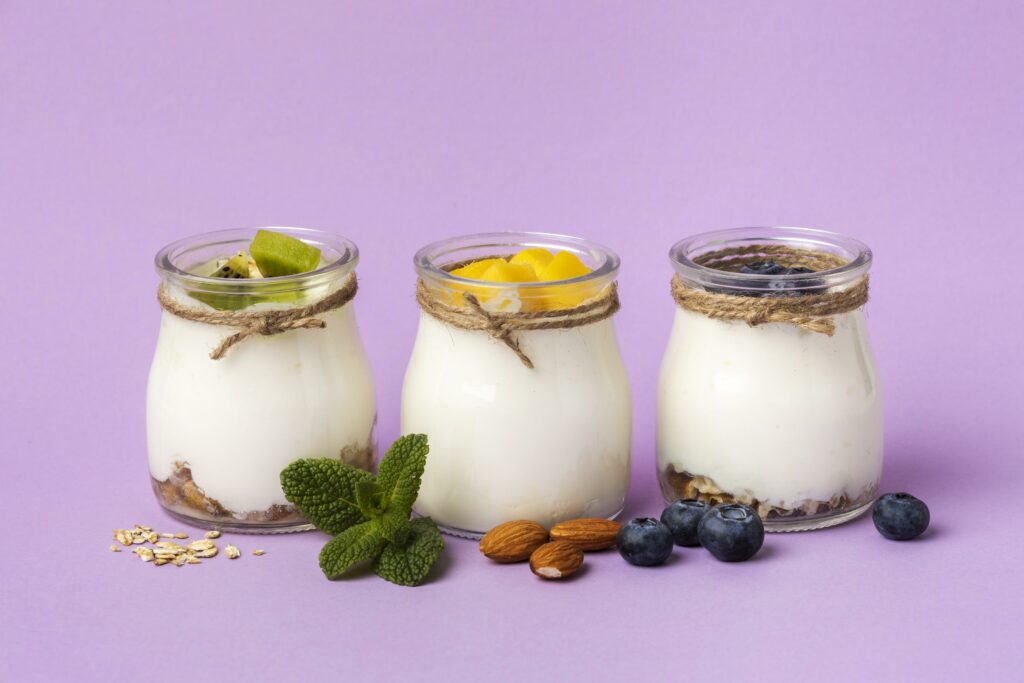Everybody begins his day with one thing that’s tea, newspaper, and fruit. I used to be fascinated about what sort of fruits needs to be included right here. Surprisingly I discovered 15 fruits that begin with M. So, I began actively researching fruits that begin with M.
Fruits that begin with M are extremely nutritious and wealthy sources of nutritional vitamins, minerals, and antioxidants important for good well being. What number of fruits that begin with M ? Mangoes, melons, and mulberries are generally recognized however listed below are some extra fruits and fascinating information about them that you could be not know.
It covers all about fruits that begin with M like colour, form, dietary worth, well being advantages, culinary makes use of, and extra in a single article. I hope this text will likely be fruitful for you.


Right here, we’re going to find out about some such new but nutrient-packed fruits that begin with M.
Record of Fruits That Begin with M
- Mango
- Melon
- Maprang
- Macadamia
- Malay Apple
- Mamey Sapote
- Mammee Apple
- Mamoncillo
- Mandarin
- Mangaba
- Manila Tamarind
- Manoao
- Maqui
- Marang
- Maypop
Comparability desk of the highest 5 fruits that begin with M
| Identify of Fruits | Alternate Identify | Energy (per 100g) |
| Mango | – | 99 cal |
| Melon | Cantaloupe, Gourd, Papaya, Watermelon, Casaba, And Honeydew | 36 cal |
| Maprang | Gandaria, Plum Mango, and Marian plum | 48 cal |
| Macadamia | Queensland Nut, Bush Nut, Maroochi Nut, Bauple Nut, And Hawaii Nut | 204 cal |
| Malay apple | Mountain Apple, Rose Apple, Otaheite Apple, Pink Satin-Ash, Plumrose and Pommerac | 32 cal |
1. Mango


A mango is probably the most well-known fruit on the earth. It is called the “King of the Fruit”. It has come from the cashew household. It’s developed in a tropical nation. The Nutritional vitamins A, C, and D are wealthy in sources that come from Mango.
That is the evergreen tree. It has totally different shapes, flavors, colours, and seed sizes relying on local weather. The pores and skin of the mango is inexperienced and when it ripens turns crimson, yellow, or orange. The internal flesh of the mango is juicy with candy, bitter, and like melon in style. The colour of the internal flesh is golden yellow. I like mangoes very a lot of their style and colour.
Origin: Come from India
Scientific Identify: Mangifera indica
Dietary Worth Per 100g:
- Energy: 99 Cal
- Fats: 0.63g
- Sodium: 0 mg
- Carbohydrates: 24.8 g
- Fiber: 2.64 g
- Sugars: 22.6 g
- Protein: 1.35g
Well being Advantages:
- Defend from constipation.
- Preserve your weight.
- Enhance your hair and pores and skin well being.
- Combat in opposition to unhealthy ldl cholesterol.
- Forestall hypertension.
- Combat in opposition to all sorts of cancers.
Varieties: Alphonso mango, Langra mango, Dasheri, and extra.
Allergy symptoms (if any): Mouth itching, hives, vomiting, and respiratory points.
Culinary Use: Juices, Smoothies, Ice-cream, and eaten recent.
2. Melon


Melons come from the cucurbitaceous household. This fruit is a sort of berry. It’s well-liked for its extremely nutritious worth akin to Nutritional vitamins A and C, minerals, fibers, and polyphenols, and likewise as excessive content material of water. The style of melon is nice and fragrant with juicy flesh.
It is a seasonal fruit out there in summer time. Its colour is dependent upon the number of melons, the outer aspect of the melon is inexperienced and the internal flesh is crimson, pink, orange, yellow inexperienced, and white. Normally, on summer time days I extremely devour the fruit melons as a result of their excessive content material of water.
Urged Learn => Fruits That Begin With Q
Origin: Come from Africa
Scientific Identify: Cucumis melo
Alternate Names: Cantaloupe, Gourd, Papaya, Watermelon, Casaba, And Honeydew.
Dietary Worth Per 100g:
- Energy: 36 Cal
- Fats: 0.1g
- Sodium: 18 mg
- Carbohydrates: 9.1 g
- Fiber: 0.8 g
- Sugars: 8.1 g
- Protein: 0.5g
Well being Advantages:
- Defend in opposition to dehydration
- Enhance immunity
- Enhance eye well being
- Forestall in opposition to blood strain
- Assist for weight reduction
- Scale back the danger of diabetic
- Enhance hair well being and pores and skin
Varieties: Watermelon, Cantaloupe, Honeydew, Casaba, Muskmelon
Allergy symptoms (if any): Pollen meals allergy syndrome, Oral allergy syndrome
Culinary Use: Recent salad, cooked soup, stew, curry, picked.
3. Maprang


That is the evergreen tree. It’s a flowering plant that comes from the Anacardiaceae household. It’s small in measurement with an oval form. The fruit has a pink colour the seed. The unripe fruit is inexperienced in colour and turns orange and yellow when it’s ripe.
It has a candy and tangy taste like Alphonso mango and has a lightweight odor like turpentine. It’s out there in the summertime season. The fruit is a wealthy supply of Vitamin C and likewise calcium, iron, and phosphorous.
Origin: Come from Southeast Asia
Scientific Identify: Bouea Macrophylla
Alternate Names: Gandaria, Plum Mango, and Marian plum
Dietary Worth Per 100g:
- Energy: 48 Cal
- Fats: 0g
- Sodium: 0 mg
- Carbohydrates: 11 g
- Fiber: 1.5 g
- Sugars: 0 g
- Protein: 1g
Well being Advantages:
- Enhance digestive system
- Assist to scale back weight reduction
- Good for pores and skin, eye, and bone well being
- Reduction in gastro downside
- Enhance the immunity system
Varieties: Maprang wan and Mayong chid
Allergy symptoms (if any): Nausea and swollen lips
Culinary Use: Salad, jam, pickles, chutneys, desserts, and welcome drink
4. Macadamia


These are the 4 species of evergreen crops that come from the Proteaceae household. Out of the 4 species two are used for consumption. It’s the nut tree. Its colour is golden yellow with a honey-yellow colour. It has a spherical form with a taste of creamy buttery due to its excessive content material of fat. The feel of the fruit is crunchy. That is the flowering plant, when the fruit is mature it falls in March to September.
Origin: Come from Australia
Scientific Identify: Macadamia integrifolia
Alternate Names: Queensland Nut, Bush Nut, Maroochi Nut, Bauple Nut, And Hawaii Nut
Dietary Worth Per 100g:
- Energy: 204 Cal
- Fats: 21.6g
- Sodium: 1.13 mg
- Carbohydrates: 3.8 g
- Fiber: 2.3 g
- Sugars: 1.2 g
- Protein: 2.2g
Well being Advantages:
- Management blood sugar
- Forestall from coronary heart illness
- Defend in opposition to irritation
- Enhance digestive system
Varieties: Macadamia integrifolia and Macadamia tetraphylla.
Allergy symptoms (if any): Anaphylaxis or Extreme Signs.
Culinary Use: Snacks or use as an ingredient in confectionery merchandise.
5. Malay Apple


I like Malay apples as a result of their crispy, and watery style. That is the evergreen flowering plant that grows in tropical areas. It’s initially from the Myrtaceae household. It’s broken whether it is saved in freezing temperatures. It’s a massive seed and its colour is darkish crimson with white flesh, however a few of them are white and pink. When it matures it smells like a rose and tastes candy, watery, and crispy.
Origin: Southern Asia and Australia
Scientific Identify: Syzygium malaccense
Alternate Names: Mountain Apple, Rose Apple, Otaheite Apple, Pink Satin-Ash, Plumrose, and Pommerac
Dietary Worth Per 100g:
- Energy: 32 Cal
- Fats: 0.1g
- Sodium: 0 mg
- Carbohydrates: 7.5 g
- Fiber: 1 g
- Sugars: 0 g
- Protein: 0.3g
Well being Advantages:
- Defend in opposition to irritation
- Low danger of all sorts of cancers
- Good for pores and skin well being
- Good for bone well being
- Defend in opposition to diabetes
- Enhance hair and eye well being
Varieties: Acca malaccensis, Eugenia domestica, Eugenia malaccensis
Culinary Use: Salad, eaten recent, and wine.
6. Mamey Sapote


That is a decorative evergreen tree with medium measurement fruit. It’s an historic fruit with a spherical, oval form, generally it has a pointed finish. The flesh colour is darkish brown and the outer aspect is thick and tough with a creamy texture. It’s a wealthy supply of Nutritional vitamins A and C in addition to potassium. In the summertime season, it’s blooming, and largely it’s out there from Might to July. I like this fruit as a result of I get all of the flavors in a single fruit like smooth candy potato, pumpkin, pumpkin pie, and honey.
Origin: Come from Central America
Scientific Identify: Pouteria Sapota
Alternate Names: Sapote, Mamey Colorado
Dietary Worth Per 100g:
- Energy: 124 Cal
- Fats: 0.46g
- Sodium: 7 mg
- Carbohydrates: 32.10 g
- Fiber: 5.4 g
- Sugars: 0 g
- Protein: 1.45g
Well being Advantages:
- Enhance coronary heart well being
- Good for the digestive system
- Nice for pores and skin well being
- Combat in opposition to anemia
- Elevated immunity system
Varieties: Yellow sapote, Inexperienced sapote
Allergy symptoms (if any): Numbness in mouth and throat, swelling on eyelid.
Culinary Use: Eat recent, smoothies, and juice together with different fruits.
7. Mammee Apple


That is an evergreen tree with edible fruit belonging to the Calophyllaceae household. It’s present in tropical areas. It’s a seed with two sorts of fruit that’s small in measurement, has one seed and enormous has 4 seeds. It has a rounded form however is barely irregular. When it’s unripened it’s a tough and heavy look, however when it’s mature it has smooth flesh.
That is the berry and the colour of the berry is mild brown with a taste just like the passionfruit and apricot with a tangy style. It’s the summer time fruit. This fruit is a wealthy supply of nutritional vitamins A and C with a big content material of amino acid, phosphorus, calcium, iron, and potassium.
Origin: Origin from the West Indies and tropical America
Scientific Identify: Mammea Americana
Alternate Names: Mamey, Mamey Apple, Santo Domingo Apricot, Tropical Apricot, Or South American Apricot
Dietary Worth Per 100g:
- Energy: 51Cal
- Fats: 0.5g
- Sodium: 15 mg
- Carbohydrates: 12.5 g
- Fiber: 3 g
- Sugars: 0 g
- Protein: 0.5g
Well being Advantages:
- Good for weight upkeep
- Scale back untimely ageing
- Good for the immune system
- Assist management constipation
Allergy symptoms (if any): Itching on mouth and throat, swollen on lips, throat, and tongue.
Culinary Use: Eaten recent, welcome drinks, jam, jelly
8. Mamoncillo


This belongs to the Sapindaceae household. It’s just like lychee, rambutan, and longan fruits. It’s a huge supply of Vitamin C. The fruit is grown within the group on one department. It’s a rounded form with clean and hard pores and skin.
The colour of the fruit is inexperienced and the internal flesh is orange to pale yellow. It’s a mixture of lime and lychee. The flavour of the fruit is tangy, acidic, and candy like lime and lychee. The fruit is accessible in the summertime season.
Origin: initially come from northern South America and the Island of Margarita.
Scientific Identify: Melicoccus bijugatus
Alternate Names: Genip, Ginep, Guenepa, Spanish Lime, Limoncillo, Macao, Maco, Mammon, Mauco, Quenepa
Dietary Worth Per 100g:
- Energy: 70 Cal
- Fats: 0.1g
- Sodium: 0 mg
- Carbohydrates: 17 g
- Fiber: 1.9 g
- Sugars: 0 g
- Protein: 0.7g
Well being Advantages:
- Good for sleep
- Enhance immune system
- Scale back the danger of diabetes
- Good for pores and skin and dental well being
- Combat in opposition to most cancers
- Management the ldl cholesterol degree
- Forestall from coronary heart illness
- Good for the digestive system
Varieties: Massive, Jose Pabon, and Montgomery
Culinary Use: Juice and welcome drink
9. Mandarin


This comes from the Rutaceae household. It’s a species of citrus tree. The form of the fruit is small and rounded. The fruit is unripe it’s inexperienced, then adjustments colour to orange, yellow-orange, and red-orange. The pores and skin of the fruit is skinny and simply peeled.
The flavour of fruit is mild bitter, sweeter, and stronger than oranges. It’s out there from November to April. It’s a wealthy supply of Vitamin C. I devour this fruit a lot of quantity as a result of its excessive content material of water, and its taste like candy, bitter, and tangy.
Origin: Initially from China
Scientific Identify: Citrus reticulata
Alternate Names: Tangerine
Dietary Worth Per 100g:
- Energy: 47 Cal
- Fats: 0.3g
- Sodium: 0 mg
- Carbohydrates: 11.7 g
- Fiber: 2 g
- Sugars: 9.33 g
- Protein: 0.7g
Well being Advantages:
- Scale back the danger of most cancers
- Scale back the danger of coronary heart illness
- Enhance the immunity system
- Good for digestion
- Scale back the danger of kidney stone
Varieties: Clemenules, Gold, Mondial, Orri, Satsuma, Ortanique
Allergy symptoms (if any): Itching of lip, tongue, and throat
Culinary Use: Jam, Cake, Smoothies, Juice
10. Mangaba


The mangabeira tree bears the Mangaba fruit. It’s the species of Hancornia speciosa that comes from the Apocynaceae household. The tree has begun to bear fruits at 3-5 years. It’s cultivated in tropical areas. The form of the fruit is oval and a few of them prefer to berry with a yellow, or greenish colour. Whereas it’s ripened the feel is smooth with a style has juicy, mild milky, candy, and bitter, and has a sweet-smelling. That is the supply of Nutritional vitamins C, A, and B1.
Origin: Come from Brazil
Scientific Identify: Hancornia speciosa
Alternate Names: Mangabeira
Dietary Worth Per 100g:
- Energy: 46.0 Cal
- Fats: 0.28g
- Sodium: 0 mg
- Carbohydrates: 11.42 g
- Fiber: 0 g
- Sugars: 0 g
- Protein: 0.7g
Well being Advantages:
- Reduction in menstrual ache
- Combat in opposition to irritation
- Good for tuberculosis
- Assist to deal with diarrhea
- Combat in opposition to abdomen most cancers
- Scale back gastric ulcers
Allergy symptoms (if any): Itching, Hives, Vomiting, or respiratory issues
Culinary Use: Eat recent, juice, jam, pastries, wine, and welcome drink.
11. Manila Tamarind


That is the multiuser evergreen flowering tree. It’s a conventional medicinal tree. This tree comes from the pea household which is Fabaceae. It’s also often called monkeypod. It has small, white-greenish flowers, and fruits are greenish-brown to red-pinkish in colour. It has a brown colour pod with a smooth white colour acidic pulp. The form of the pod is cylindrical with curved or straight and rounded ends. The style of fruit is nice, bitter, and astringent. It’s out there from March to October.
Origin: Authentic from Central America
Scientific Identify: Pithecellobium dulce
Alternate Names: Camachile, Monkey Pods, Candy Inga, Madras Thorn
Dietary Worth Per 100g:
- Energy: 78 Cal
- Fats: 0.4g
- Sodium: 19 mg
- Carbohydrates: 18 g
- Fiber: 1.2 g
- Sugars: 0 g
- Protein: 3g
Well being Advantages:
- Nice for weight reduction
- It has anti-cancer properties
- Assist to regulate intestinal issues
- Good for pores and skin well being
- An excellent remedy for eczema
- Enhance immunity
- Management diabetes
- Assist to guard the liver
- Assist to deal with tuberculosis
Varieties: Madras thorn, Kodukkapuli
Allergy symptoms (if any): Belly ache, respiratory issues, wheezing, coughing, hives, face swelling
Culinary Use: Consuming recent, making smooth drinks, cooking
12. Manoao


The manoao fruit comes from the Podocarpaceae household. It’s a slow-growing evergreen flowering plant. The species are categorized as Dacrydium or Lagarostrobos. This fruit has female and male cones are involved. The male cone is 5 mm lengthy and the feminine cone has 6-7 scales. This grew into the three phases foliage, flowering, and fruiting it occurred all 12 months. This fruit is oval and spherical.
Origin: Initially from New Zealand
Scientific Names: Manoao colensoi
Alternate Names: Silver pine
Well being Advantages:
- Reduction from chilly and flu
- Scale back cough and respiratory issues
- Scale back the danger of most cancers
- Forestall from irritation
- Management ldl cholesterol degree
- Low danger of coronary heart illness
- Good for the digestive system
Varieties: Westline pine and white silver pine
Allergy symptoms (if any): Pores and skin irritation
Culinary Use: Eaten recent, juice, jam, jelly, smoothies
13. Maqui


That is the evergreen shrub. It’s newly declared as a superfood due to its extraordinary properties. It has a purple-blue colour and tastes just like blueberries and raspberries. That is the tangy juicy taste. It has a content material of excessive antioxidants, polyphenols, and anthocyanidins that’s why they provide them purple colour. It grows in a seaside local weather.
Origin: Initially from Chile and Argentina
Scientific Identify: Aristotelia chilensis
Alternate Names: Chilean Wineberry, Chilean Wine Berry, Clon, Jus de Maqui, Macqui, Macqui Berry, Maquei, Maquei Berry, Maquei Tremendous Fruit, Maqui Berry, Maqui Berry Juice, Maqui Juice, Queldron.
Dietary Worth Per 100g:
- Energy: 12 Cal
- Fats: 0g
- Sodium: 0 mg
- Carbohydrates: 4 g
- Fiber: 2 g
- Sugars: 1 g
- Protein: 0g
Well being Advantages:
- Assist to scale back irritation
- Shielded from Diabetes
- Good for eye well being
- Enhance immunity
Allergy symptoms (if any): Redness, irritation, swelling, hives, and rashes
Culinary Use: Jam, and welcome drink
14. Marang


I like to recommend this fruit because it has a lot of well being advantages and is an effective supply of energy. That is the evergreen flowering plant which has similarities to the jackfruit, cempedak, durian, and breadfruit. fruit belongs to the Moraceae household.
That is the subglobose fruit, when it’s ripe it turns inexperienced to yellowish-brown. It accommodates so many seeds which are lined with white juicy pulp. The outer aspect of this fruit is inflexible and furry protuberances. It smells like gasoline and the flavour is nice. This fruit is accessible from September to October and generally December season.
Origin: Authentic from the Philippines and Malaysia
Scientific Identify: Artocarpus odoratissimus
Alternate Names: Madang, Timadang, Terap, Tarap, Kiran, Inexperienced Pedalai, Or Johey Oak
Dietary Worth Per 100g:
- Energy: 110 Cal
- Fats: 0.2g
- Sodium: 0 mg
- Carbohydrates: 32.4 g
- Fiber: 0.7 g
- Sugars: 0 g
- Protein: 1g
Well being Advantages:
- Assist to enhance immunity
- Assist to scale back constipation
- Enhance digestive system
- Management blood strain
- Defend from coronary heart illness
- Enhance eye and pores and skin well being
- Good for a wholesome being pregnant
Varieties: It’s brown and evergreen
Allergy symptoms (if any): Oral Allergy syndrome
Culinary Use: Eat recent, Boiled, and roasted seeds for consuming.
15. Maypop


That is an evergreen rising flower plant. It belongs to the Passiflora household. It has a big flower with distinguished types and stamens. That is the oval formed with yellowish berry with authentic white pulp and when it ripens turns boring yellowish berry. The style of fruit is just like guava. It’s out there in late summer time to early autumn, akin to September to November.
Origin: North America
Scientific Identify: Passiflora Incarnata
Alternate Names: Purple Passionflower, True Passionflower, Wild Apricot, And Wild Ardour Vine
Dietary Worth Per 100g:
- Energy: 97 Cal
- Fats: 0.7g
- Sodium: 28 mg
- Carbohydrates: 23.38 g
- Fiber: 10.4g
- Sugars: 11.2 g
- Protein: 2.2g
Well being Advantages:
- Management blood -pressure
- Scale back sleeping issues
- Forestall from coronary heart illness
- Management the diabetes degree
- Good for ladies’s well being
- Combat in opposition to most cancers
Varieties: Purple ardour fruit, and yellow ardour fruit
Allergy symptoms (if any): Oral allergy syndrome
Culinary Use: Jelly, Jam, dessert
Steadily Requested Questions
What’s a berry that begins with the letter M?
The title of the berry that begins with the letter M is Mulberry. There are 64 totally different species of mulberries. When the ripening course of turns from Pink to Pink colour. The flavour of the fruit is nice and candy.
What apples begin with M?
The apple that begins with M is:
Magnum Bonum
Magnum Gala
Magnus Crab
Magog Redstreak
Maharaji Sophorae
MaHe
Mahogany
Mai. Sort
What’s a crimson apple that begins with M?
The Mclntosh Pink is called the Mac. It is likely one of the sorts of apples. That is the nationwide apple in Canada. The colour of the fruit is crimson and inexperienced with white flesh inside and a tangy taste. Late September is the ripening interval of apples.
What’s a inexperienced apple that begins with M?
The inexperienced apple that begins with M is Mutsu. The dimensions of the fruit is medium to massive with white or greenish-yellow coloured flesh inside. The form of the apple fruit is spherical, conical, or rectangular and has a not related aspect. In inexperienced apples, the form and measurement are normally not constant.
Conclusion
On this article, you appeared on the checklist of fruits that begin with M with some fascinating information about them. They’ve totally different flavors and varieties. These fruits have one frequent attribute of containing Vitamin C, which is why it’s normally out there in the summertime season. All these are evergreen flowering crops and they’re useful for well being. Tell us within the feedback part concerning the fruit you want most.





